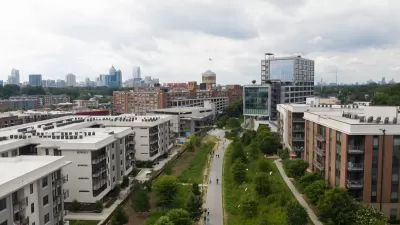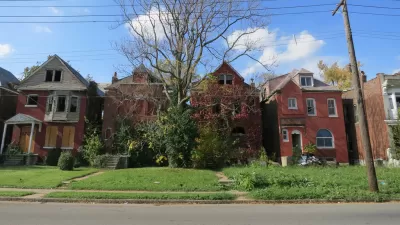Research around the United States has found gentrification to produce public health risks. Will lessons from Oakland and New York City be enough for a rapidly gentrifying city like St. Louis to escape poor public health outcomes?

Samuel H. Taylor reviews the studies that have found gentrification to be a public health risk.
- The Alameda County Public Health Department in Oakland, California, found "that the overall impact of gentrification on the displacement of current residents has been enormous, forcing the community’s largely African-American demographic to either move out amidst skyrocketing rent prices or attempt to weather the storm and stay put. The costs to these residents, stated the report, have been reduced psychological and social well-being, increased stress, financial uncertainty, shifting community structure, and the loss of vital health and social resources."
- Researchers in New York City found that rapid gentrification was associated with higher pre-term birth rates amongst African-American women.
- Other studies have shown that gentrification "significantly affect low-income children and limit their access to educational resources."
The evidence of gentrifications negative health impacts are numerous enough that the Centers for Disease Control have identified gentrification as a "potential health risk to communities."
After the literature review, Taylor examines the case of St. Louis—"one of the fastest gentrifying cities in the United States"—producing a call to action in response to the challenge facing the city: "Development is great for St. Louis; displacement would raise serious questions about the health of our city. With an eye toward protecting vulnerable communities and supporting their development, St. Louis can have the former without the latter."
FULL STORY: Gentrification as public health concern?

Study: Maui’s Plan to Convert Vacation Rentals to Long-Term Housing Could Cause Nearly $1 Billion Economic Loss
The plan would reduce visitor accommodation by 25,% resulting in 1,900 jobs lost.

North Texas Transit Leaders Tout Benefits of TOD for Growing Region
At a summit focused on transit-oriented development, policymakers discussed how North Texas’ expanded light rail system can serve as a tool for economic growth.

Why Should We Subsidize Public Transportation?
Many public transit agencies face financial stress due to rising costs, declining fare revenue, and declining subsidies. Transit advocates must provide a strong business case for increasing public transit funding.

How to Make US Trains Faster
Changes to boarding platforms and a switch to electric trains could improve U.S. passenger rail service without the added cost of high-speed rail.

Columbia’s Revitalized ‘Loop’ Is a Hub for Local Entrepreneurs
A focus on small businesses is helping a commercial corridor in Columbia, Missouri thrive.

Invasive Insect Threatens Minnesota’s Ash Forests
The Emerald Ash Borer is a rapidly spreading invasive pest threatening Minnesota’s ash trees, and homeowners are encouraged to plant diverse replacement species, avoid moving ash firewood, and monitor for signs of infestation.
Urban Design for Planners 1: Software Tools
This six-course series explores essential urban design concepts using open source software and equips planners with the tools they need to participate fully in the urban design process.
Planning for Universal Design
Learn the tools for implementing Universal Design in planning regulations.
City of Santa Clarita
Ascent Environmental
Institute for Housing and Urban Development Studies (IHS)
City of Grandview
Harvard GSD Executive Education
Toledo-Lucas County Plan Commissions
Salt Lake City
NYU Wagner Graduate School of Public Service





























